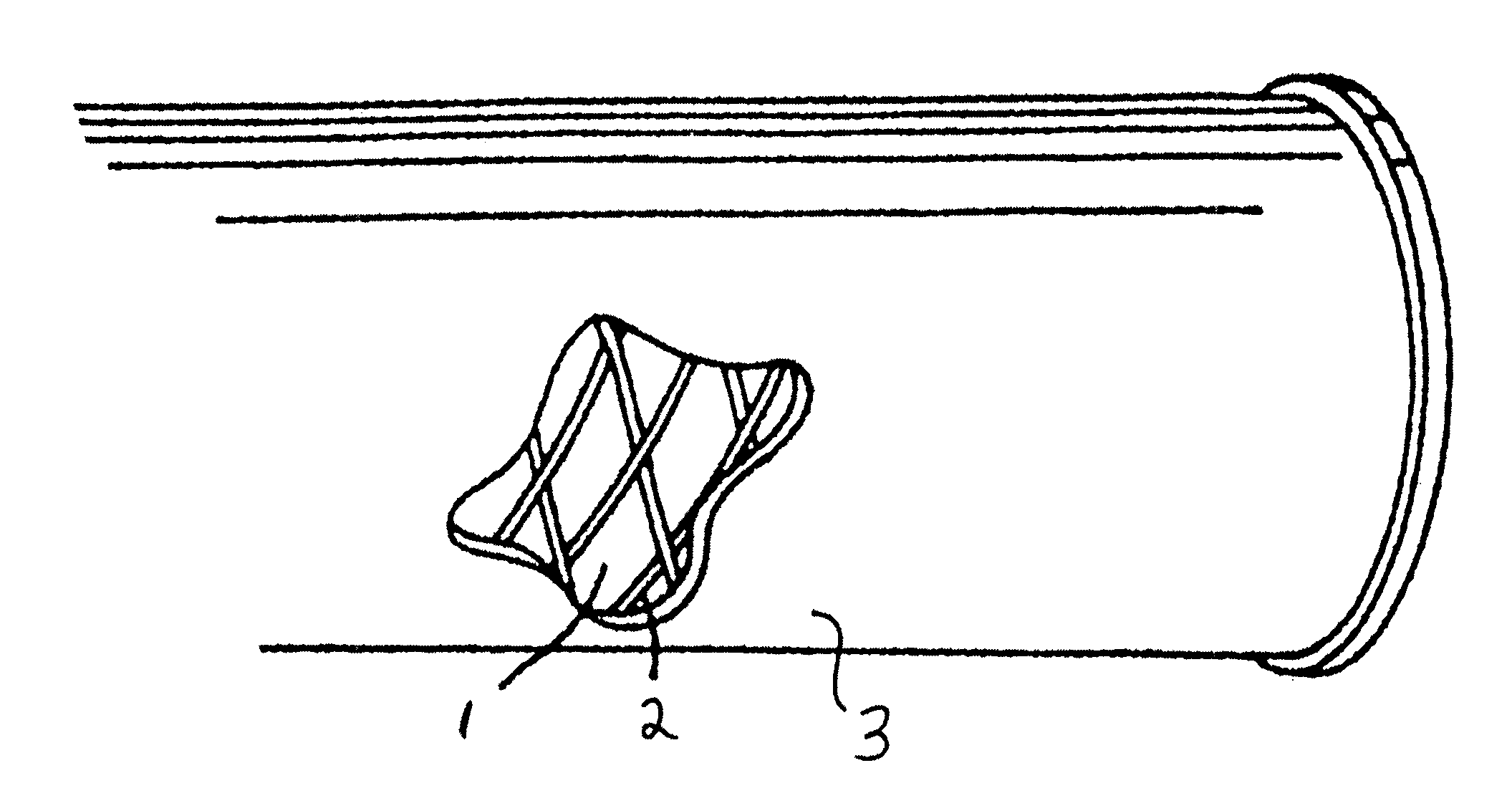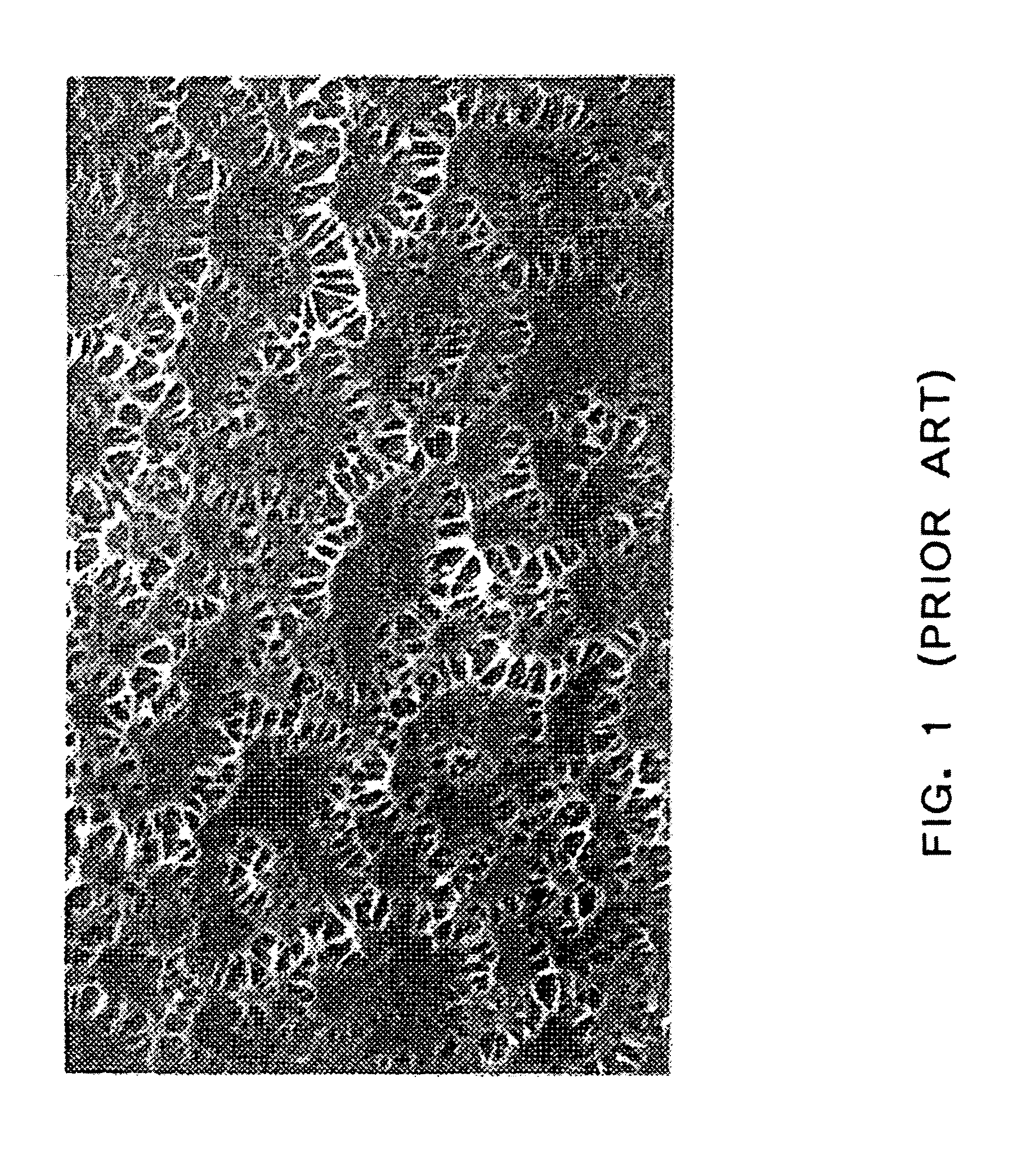Hemocompatible polymers on hydrophobic porous polymers
a technology of hydrophobic porous polymers and polymers, which is applied in the direction of blood vessels, packaging foodstuffs, packaged goods, etc., can solve the problems of occlusions that occur frequently, changes harmful to patients in blood or other fluid coming into contact with the surface (or surface) of the device, and lack of biocompatibility and/or hemocompatibility of the material comprising the blood-contact portions of the invasive device, etc., to achieve the effect o
- Summary
- Abstract
- Description
- Claims
- Application Information
AI Technical Summary
Benefits of technology
Problems solved by technology
Method used
Image
Examples
examples
[0043]DURAFLO II may be used herein in place of DURAFLO without modification.[0044]1) Prepare a solution consisting of the hydrochlorofluorocarbon HCFC-225 and 6% by volume methanol whereby the methanol enhances the solubility of the heparin complex in the HCFC solvent.[0045]2) Dissolve in the solution of step 1, a heparin complex, DURAFLO. The concentration of DURAFLO in the solution is selected to provide the desired coating of DURAFLO on the stent cover. Too little drug on the stent cover may be therapeutically ineffective. Too much may cause excess amounts of drug to be released into the blood soon after the stent is implanted, to the detriment of the patient.[0046]3) Dip ePTFE into the solution of step 2 allowing the solution to perfuse throughout the ePTFE porosity and deposit the DURAFLO throughout.[0047]4) Repeat step 3 if additional coating of DURAFLO is desired.
Other solvents that may be used in step 1 above include the following:
[0048]1-a) Techspray AMS Flux Remover conta...
PUM
 Login to View More
Login to View More Abstract
Description
Claims
Application Information
 Login to View More
Login to View More - R&D
- Intellectual Property
- Life Sciences
- Materials
- Tech Scout
- Unparalleled Data Quality
- Higher Quality Content
- 60% Fewer Hallucinations
Browse by: Latest US Patents, China's latest patents, Technical Efficacy Thesaurus, Application Domain, Technology Topic, Popular Technical Reports.
© 2025 PatSnap. All rights reserved.Legal|Privacy policy|Modern Slavery Act Transparency Statement|Sitemap|About US| Contact US: help@patsnap.com



